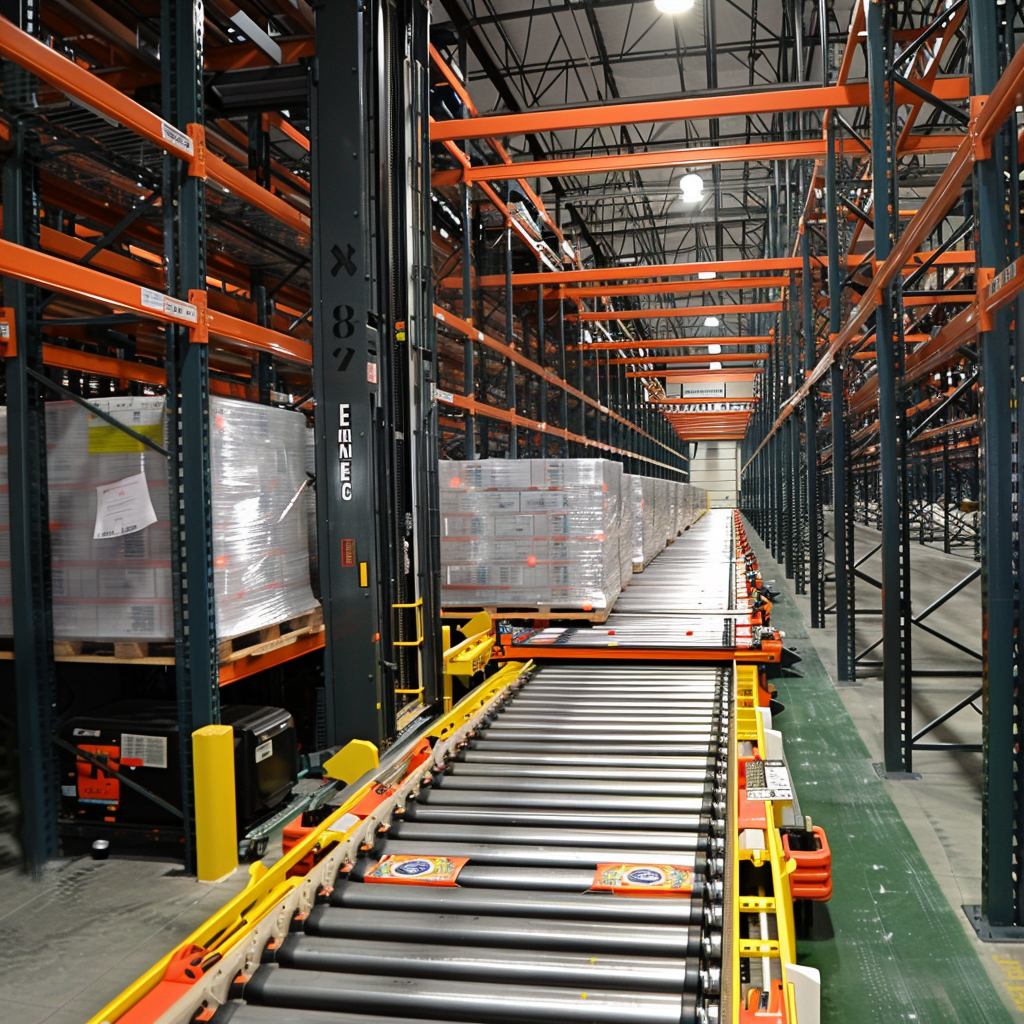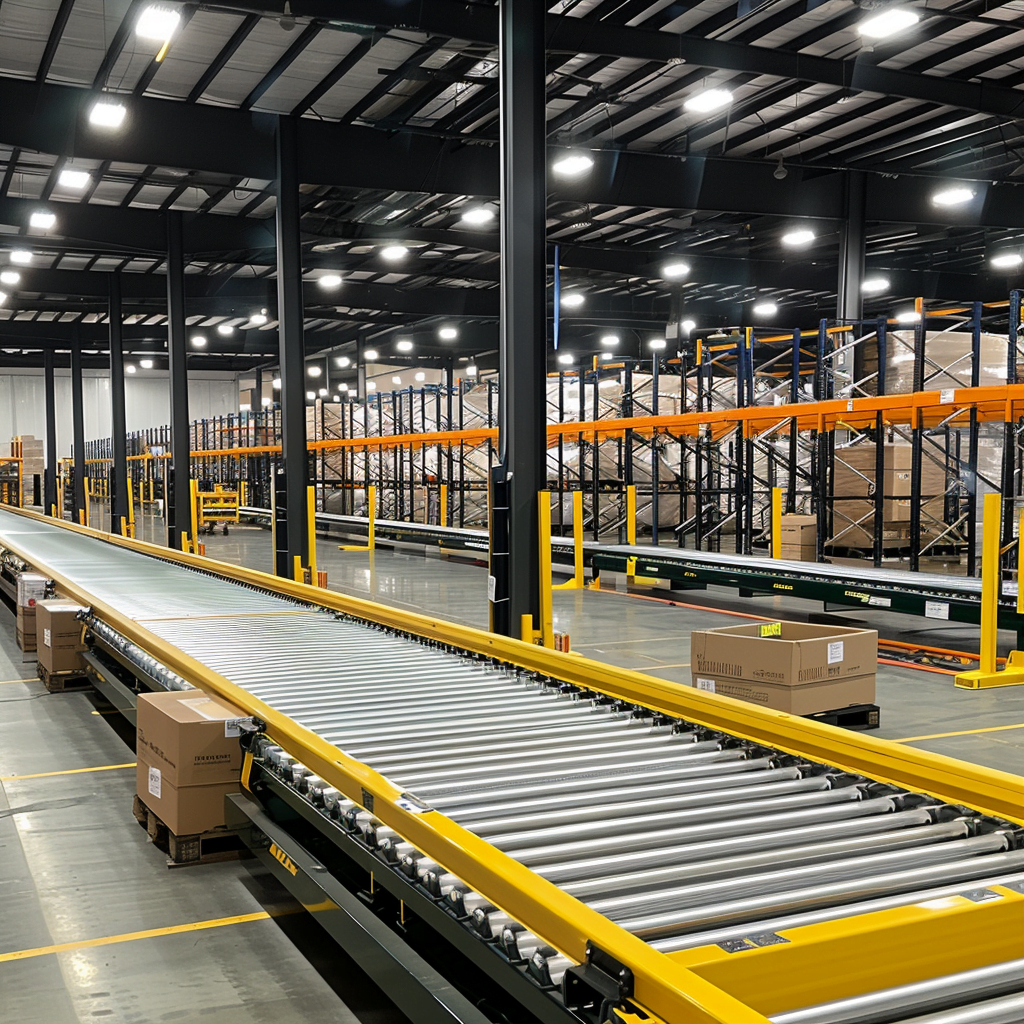Material handling is a critical component of warehouse operations, impacting everything from operational efficiency to customer satisfaction. Efficient material handling ensures that materials move smoothly from receipt to dispatch, minimizing costs and enhancing productivity. This comprehensive guide provides a step-by-step approach to Optimizing Material Handling.
Understanding the Importance of Material Flow
Effective material flow management is essential for streamlining warehouse operations. This includes the systematic movement, storage, and control of materials, which, if managed poorly, can lead to significant operational bottlenecks and increased costs.
Initial Assessment of Your Warehouse’s Material Flow
Analyzing Current Material Handling Processes
The first step in optimizing your warehouse operations is to thoroughly document and analyze the current material handling processes. Understanding how materials are received, stored, managed, and shipped is crucial to pinpointing areas that require improvement.
Identifying Bottlenecks and Inefficiencies
Identifying bottlenecks in the material flow process is key to enhancing efficiency. These bottlenecks could be in the form of slow-moving inventory, inefficient layout designs, or outdated equipment that hampers quick movement and processing of materials.
Impact of Material Flow on Customer Experience
The efficiency of material flow directly affects customer satisfaction. Delays in processing orders due to inefficient material handling can lead to slow order fulfillment, adversely affecting customer experience and potentially harming the business’s reputation.
Evaluating Material Handling Equipment
Assessing Equipment Efficiency
It is important to assess the efficiency and suitability of the existing material handling equipment. Evaluate if the current machinery, such as forklifts, conveyor belts, and automated storage systems, meets the needs of your warehouse operations.

Safety and Maintenance Checks
Conducting regular safety and maintenance checks ensures that the equipment is in optimal working condition, preventing accidents and unplanned downtime, which can cause significant disruptions in warehouse operations.
Cost Analysis of Material Handling Equipment
Perform a cost-benefit analysis of maintaining old equipment versus investing in newer, more efficient technology. Consider not only the immediate financial outlay but also the potential savings in long-term operational costs due to improved efficiency.
Strategic Planning for Equipment Upgrade
Develop a strategic plan for upgrading equipment by evaluating the operational benefits, potential cost savings, and the impact on warehouse efficiency. Planning should align with the overall business objectives and available budget.
Implementing Changes to Improve Material Flow
Introducing Advanced Technologies
Integrating advanced technologies such as robotics, automated guided vehicles (AGVs), or comprehensive warehouse management systems (WMS) can significantly enhance the efficiency of material handling by automating routine tasks and reducing human error.

Reorganizing Warehouse Layout
Optimizing the layout of the warehouse to facilitate smoother material flow is crucial. This may involve repositioning storage areas, optimizing space utilization, or redesigning workflows to reduce unnecessary material movement and handling.
Monitoring and Continuous Improvement
Setting Up Monitoring Systems
Implementing advanced monitoring systems helps in continuously tracking the efficiency of the new material handling processes. Utilize data analytics to assess performance metrics and identify further areas for improvement.

Regular Review and Adjustment
Continuously review the efficiency of implemented changes. Regularly gather feedback from operational staff and periodically adjust the processes to ensure they meet changing operational demands and continue to improve efficiency.
Frequently Asked Questions About Optimizing Material Handling in Warehouses
What is material handling in a warehouse context?
Material handling in a warehouse involves the movement, storage, protection, and control of materials from the point of receipt to the point of dispatch. It encompasses all activities related to the handling of products or materials within a warehouse or distribution center.
Why is optimizing material flow important in a warehouse?
Optimizing material flow is crucial for enhancing operational efficiency, reducing costs, and improving customer satisfaction. Efficient material flow ensures that products are moved quickly and safely through the warehouse, minimizing delays and reducing the likelihood of damage.
How can I identify inefficiencies in my warehouse’s material flow?
Inefficiencies can be identified by analyzing the current material handling processes, including the movement, storage, and control of materials. Look for bottlenecks, repeated movements, excessive handling, and any processes that cause delays or require unnecessary labor.
What are some common bottlenecks in warehouse material flow?
Common bottlenecks include inadequate storage space, inefficient layout design, insufficient or outdated handling equipment, and poor inventory management practices. Each of these can slow down operations and increase operating costs.
How can I improve the safety of material handling equipment?
Improving safety can be achieved by regularly maintaining and servicing equipment, training staff on proper operational procedures, and ensuring compliance with all relevant safety standards and regulations. Regular safety audits and encouraging a culture of safety among employees are also key strategies.
What are the benefits of using automated material handling equipment?
Automated material handling equipment, such as automated guided vehicles (AGVs), conveyors, and robotic picking systems, can significantly increase efficiency, reduce labor costs, and improve accuracy in material handling. Automation also reduces the physical strain on workers, enhancing safety.
How often should I reevaluate my warehouse layout for optimal material flow?
It’s advisable to reevaluate your warehouse layout periodically, especially when there are changes in product lines, volume of operations, or storage needs. Typically, reviewing the layout annually or biennially, or following significant operational changes, is beneficial.
Can technology help in optimizing material flow in a warehouse?
Yes, technology plays a crucial role in optimizing material flow. Implementing a Warehouse Management System (WMS) can provide real-time data on inventory and material movements, help in planning and executing efficient material handling strategies, and improve overall decision-making.
What should I consider when planning to upgrade my material handling equipment?
When planning an upgrade, consider the specific needs of your operations, the compatibility of new equipment with existing systems, the potential return on investment, and the scalability of technology to meet future demands. Also, evaluate the impact of the upgrade on current operations to minimize disruption.
How do I ensure continuous improvement in material handling?
Ensure continuous improvement by regularly monitoring performance metrics, soliciting feedback from employees, engaging in continuous training programs, and staying updated with the latest industry trends and technologies. Implementing a culture of continuous improvement can drive ongoing enhancements in material handling processes.
Conclusion
Achieving an optimized material flow in a warehouse requires ongoing assessment, strategic planning, and the willingness to invest in new technologies and processes. By systematically improving each aspect of material handling, warehouses can significantly enhance operational efficiency, reduce costs, and improve customer satisfaction. Implementing these steps ensures that the warehouse not only meets current logistical demands but is also prepared to adapt to future changes in the industry.

